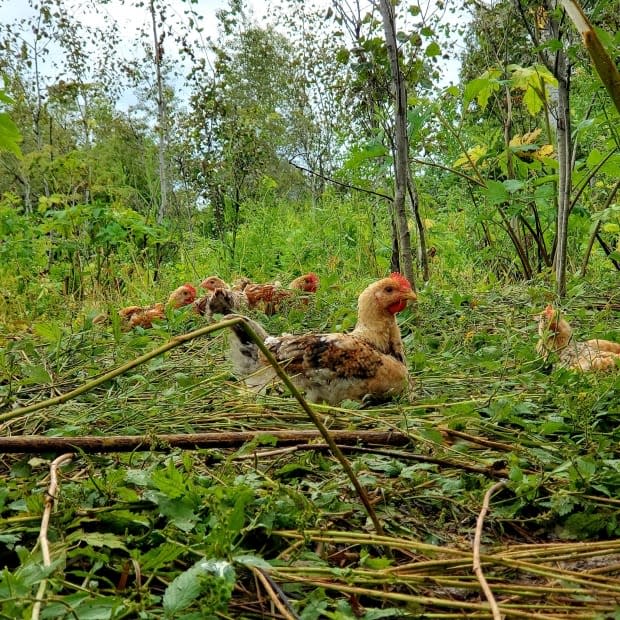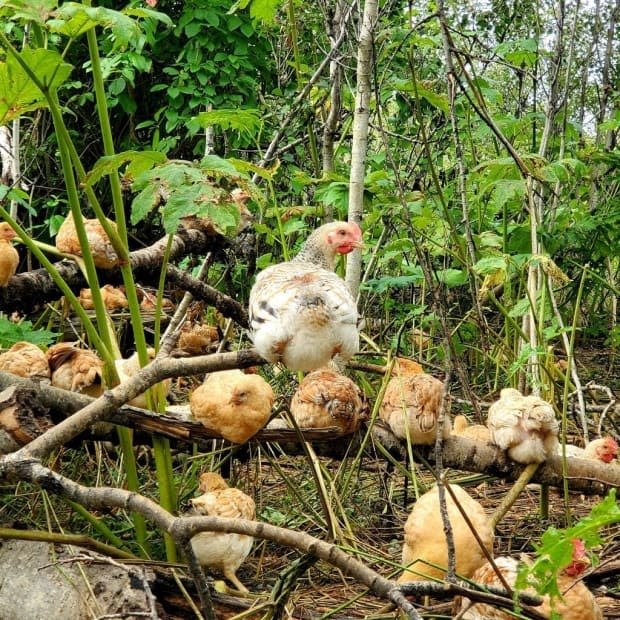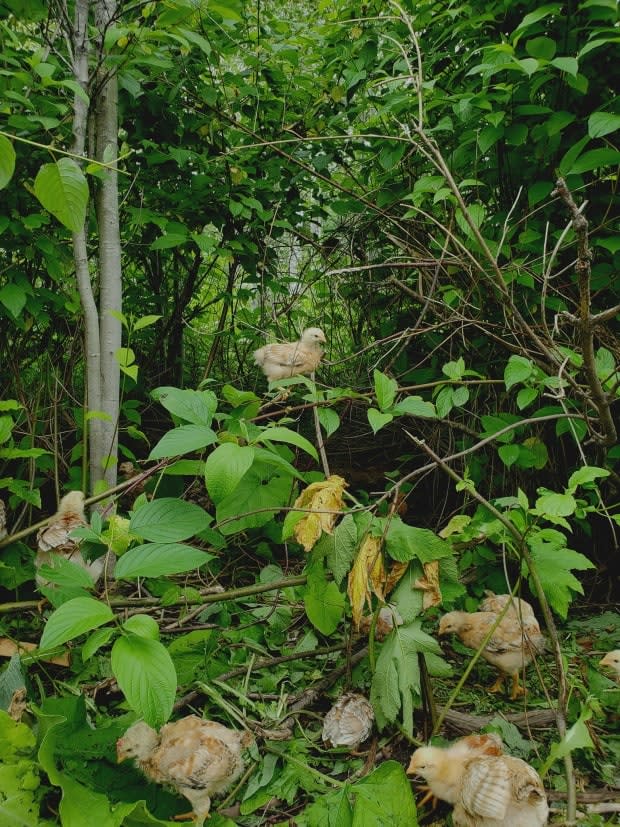Tree-range chickens: How raising poultry in the woods of B.C. could improve food security for some communities

Raising chickens in the woods is being touted as a way to help improve the food security of First Nation communities by providing an alternative to dwindling supplies of traditional foods such as moose and salmon.
The Regenerative Poultry Project has already produced 1,500 chickens on a small farm about 150 kilometres northwest of Terrace, B.C., using techniques developed in Guatemala.
The idea is that the chickens are allowed to roam the woods, roosting in trees and foraging for food, mimicking the behaviours of their wild ancestors.
"Chickens actually evolved as a jungle species," said Kesia Nagata of the non-profit Skeena Watershed Coalition, which is helping run the project. "They feel happiest when covered with a canopy that they can range under. They like to forage for their food, they like to scratch under trees and they like to roost and explore with the protection of a canopy over them."
The birds aren't completely on their own, though. They live on the property of Nathan Coombs, a Gitxsan farmer who runs Skeena Valley Farm and cares for the chickens.
Coombs built a small coop for the chickens to use at night and lets them roam the land by day, rotating them to different parts of his property so they don't overgraze the land.

"They have an acre and a half to run around and be chickens," said Coombs, who was taught how to farm by his grandfather. "Eat slugs and bugs and forage and eat the plants. It's different, for sure."
The project is based on the work of Reginaldo Haslett-Marroquin, a farmer working to reduce the environmental impacts of food production in the United States by popularizing what he calls the "tree-range" method of food production he learned growing up in Guatemala.
Nagata visited one of Haslett-Marroquin's farms in Minnesota to learn how it worked before bringing her ideas back to B.C., where she is interested in improving food security for First Nations and other northern communities.
She said she has spoken to elders who are concerned about the decline of other food sources, particularly salmon and moose, which were traditionally a reliable source of protein but are now at risk of being over-harvested.
So far, it's a success. Over the summer of 2020, Coombs and Nagata raised 1,500 chickens that were quickly distributed throughout the community.
This year, they hope to not only increase that number, but see their techniques picked up by other farms in the region and across the province.
"We really want to show people, our local Indigenous peoples, that we can provide our own food systems," said Coombs. "We can grow our healthy, sustainable foods locally on our own reserve."

Subscribe to Daybreak North on CBC Listen or your favourite podcast app, and connect with CBC Northern British Columbia on Facebook, Twitter and Instagram.

